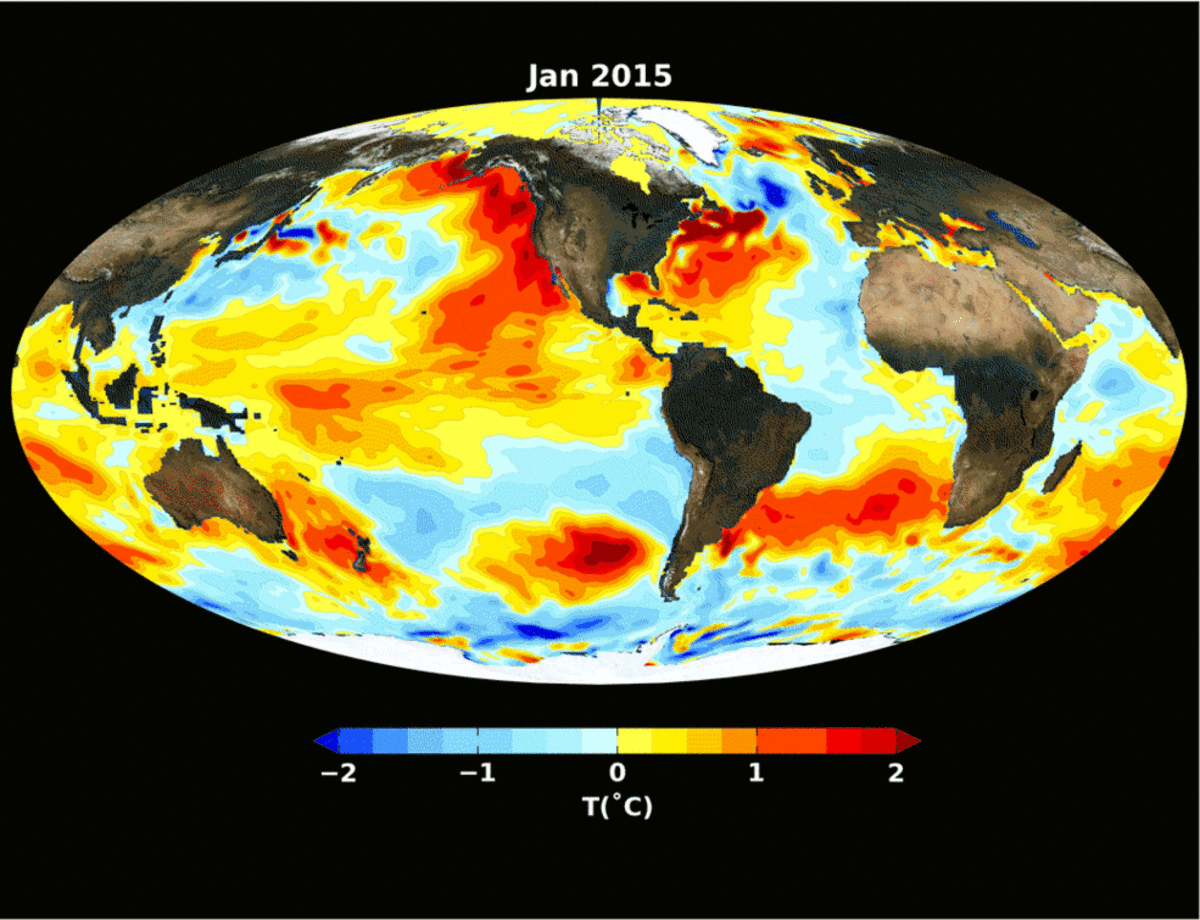PAOC Spotlights
Clearing clouds of uncertainty
How clouds respond to global warming is generally regarded as the major source of uncertainty in climate projections. Clouds shield the Earth from incoming solar radiation but also trap heat in Earth’s atmosphere, so small changes in cloud cover could have a big impact on temperature changes due to rising CO2 concentrations. Despite decades of research, climate scientists still aren’t sure how clouds will change in a warmer world, motivating them to look for new ways of constraining clouds’ behavior.
This has become an area of interest for Nick Lutsko, a postdoctoral associate in the Cronin Group, whose recent research uses naturally-occurring variations in Earth’s climate to predict how the planet will warm in the future. In other words, is it possible to use short-term cloud changes to better predict long-term climate change?
In two papers published this Fall, Lutsko outlined how cloud changes during El Niño–Southern Oscillation (ENSO) events can help us better understand Earth's sensitivity to a doubling of atmospheric CO2, called Earth’s equilibrium climate sensitivity.

In the first article, titled “What Can the Internal Variability of CMIP5 Models Tell Us about Their Climate Sensitivity?” published in the American Meteorological Society’s Journal of Climate, Lutsko found that cloud changes on ENSO time scales (2 to 5 years) are closely related to climate models’ equilibrium climate sensitivities. The findings imply that understanding how clouds vary during ENSO events can better inform predictions of how clouds will affect surface temperature changes due to CO2 increases. The concept is called an “emergent constraint,” which is when a phenomenon we can observe today, like cloud variability on 2- to 5-year time-scales, can be used to predict how an aspect of the climate will change under global warming.
“People were actually surprised by this because El Niño events have different spatial patterns than global warming,” said Lutsko. “But during an El Niño event, you’re changing the sea surface temperatures in the East Pacific and that’s causing clouds to change there, and it turns out those changes are related to how clouds will change under global warming.”
There’s just one caveat. To actually use the emergent constraint, Lutsko found, we would need at least 100 years of observational data. “And, really, optimistically speaking we have 30 years of data, so that’s kind of disappointing,” he said. “What you would like it to say is that you could make measurements for 5 years and get it to work. But it turns out you need a lot of data for these things to start working.”
Data limitations aside, if understanding how clouds behave during ENSO events can help us predict how much the Earth will warm up due to increased CO2, concentrations, where would we look next? What kind of clouds actually matter?
It turns out not all of them. In a subsequent paper, titled “The Relationship Between Cloud Radiative Effect and Surface Temperature Variability at El Niño‐Southern Oscillation Frequencies in CMIP5 Models,” published in Geophysical Research Letters, Lutsko investigated the behavior of different cloud types during ENSO events in climate models to see which types played the largest role.
He found that, in the models, high clouds, like cumulonimbus clouds, play only a minor role in changing surface temperatures during ENSO events. The main players are actually low clouds, like marine stratocumulus. These clouds are responsible for the strong correlations between cloud variability and models’ long-term warming. This, says Lutsko, shows that better understanding changes in tropical low clouds during ENSO events also allows us to better understand how clouds behave in a warmer world, regardless of the emergent constraint.
“So it’s not even that you need to know how all clouds change during ENSO events, just low clouds” said Lutsko. “And that tells you something about how they’ll change as Earth warms up.”
The results provide further impetus for scientists to study how clouds evolve during ENSO events, Lutsko hopes, since more data on clouds will not only help researchers understand El Niño, one of the most important naturally-occurring weather events, but also solve some of the most pressing puzzles regarding climate change.
“Even though you need 100 years of data, if we can better understand the physics of how clouds behave during ENSO events, we can turn around and use that to better understand how they’ll change under global warming,” said Lutsko.